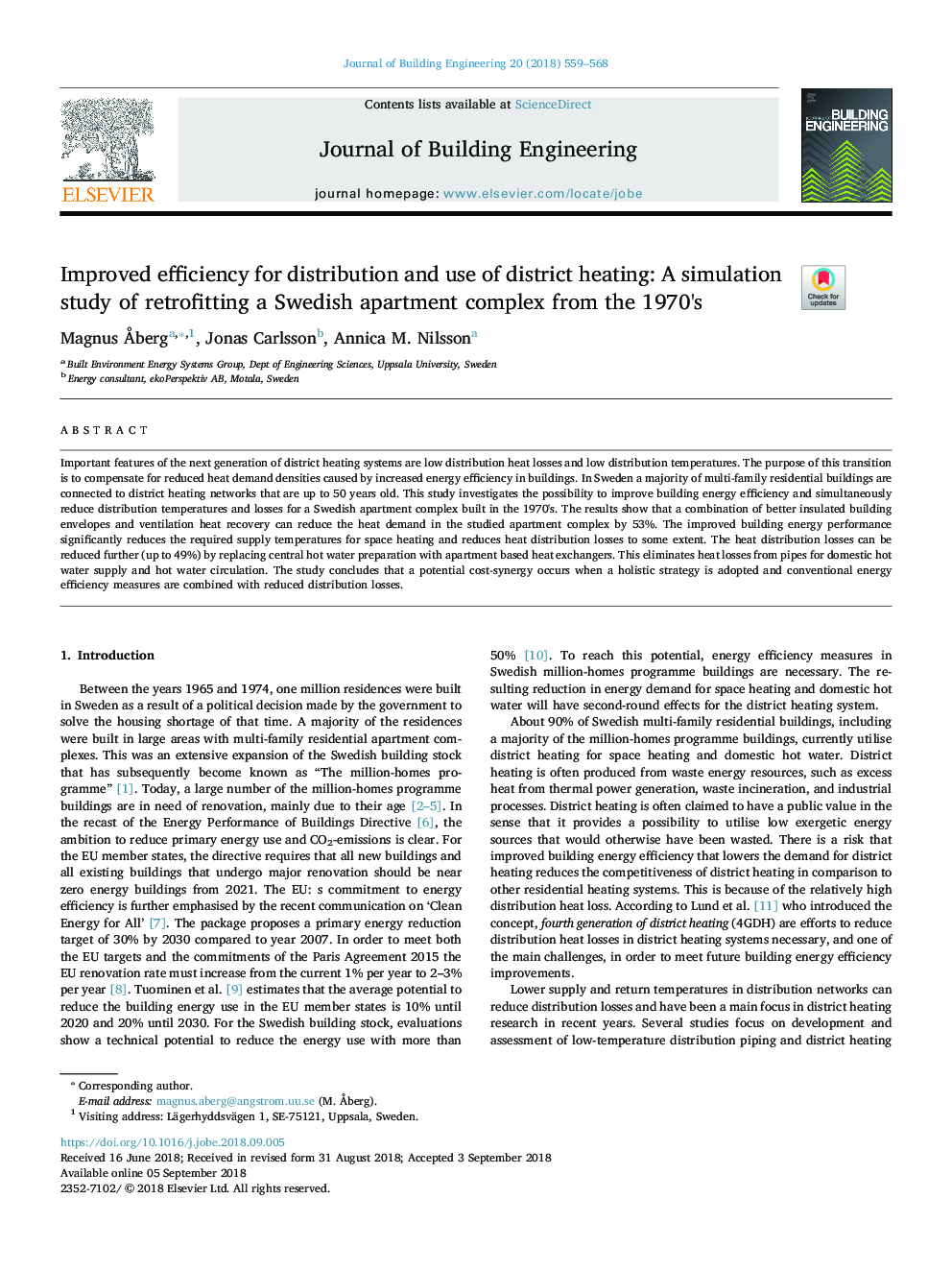| Article ID | Journal | Published Year | Pages | File Type |
|---|---|---|---|---|
| 11001099 | Journal of Building Engineering | 2018 | 10 Pages |
Abstract
Important features of the next generation of district heating systems are low distribution heat losses and low distribution temperatures. The purpose of this transition is to compensate for reduced heat demand densities caused by increased energy efficiency in buildings. In Sweden a majority of multi-family residential buildings are connected to district heating networks that are up to 50 years old. This study investigates the possibility to improve building energy efficiency and simultaneously reduce distribution temperatures and losses for a Swedish apartment complex built in the 1970's. The results show that a combination of better insulated building envelopes and ventilation heat recovery can reduce the heat demand in the studied apartment complex by 53%. The improved building energy performance significantly reduces the required supply temperatures for space heating and reduces heat distribution losses to some extent. The heat distribution losses can be reduced further (up to 49%) by replacing central hot water preparation with apartment based heat exchangers. This eliminates heat losses from pipes for domestic hot water supply and hot water circulation. The study concludes that a potential cost-synergy occurs when a holistic strategy is adopted and conventional energy efficiency measures are combined with reduced distribution losses.
Related Topics
Physical Sciences and Engineering
Engineering
Civil and Structural Engineering
Authors
Magnus Ã
berg, Jonas Carlsson, Annica M. Nilsson,
